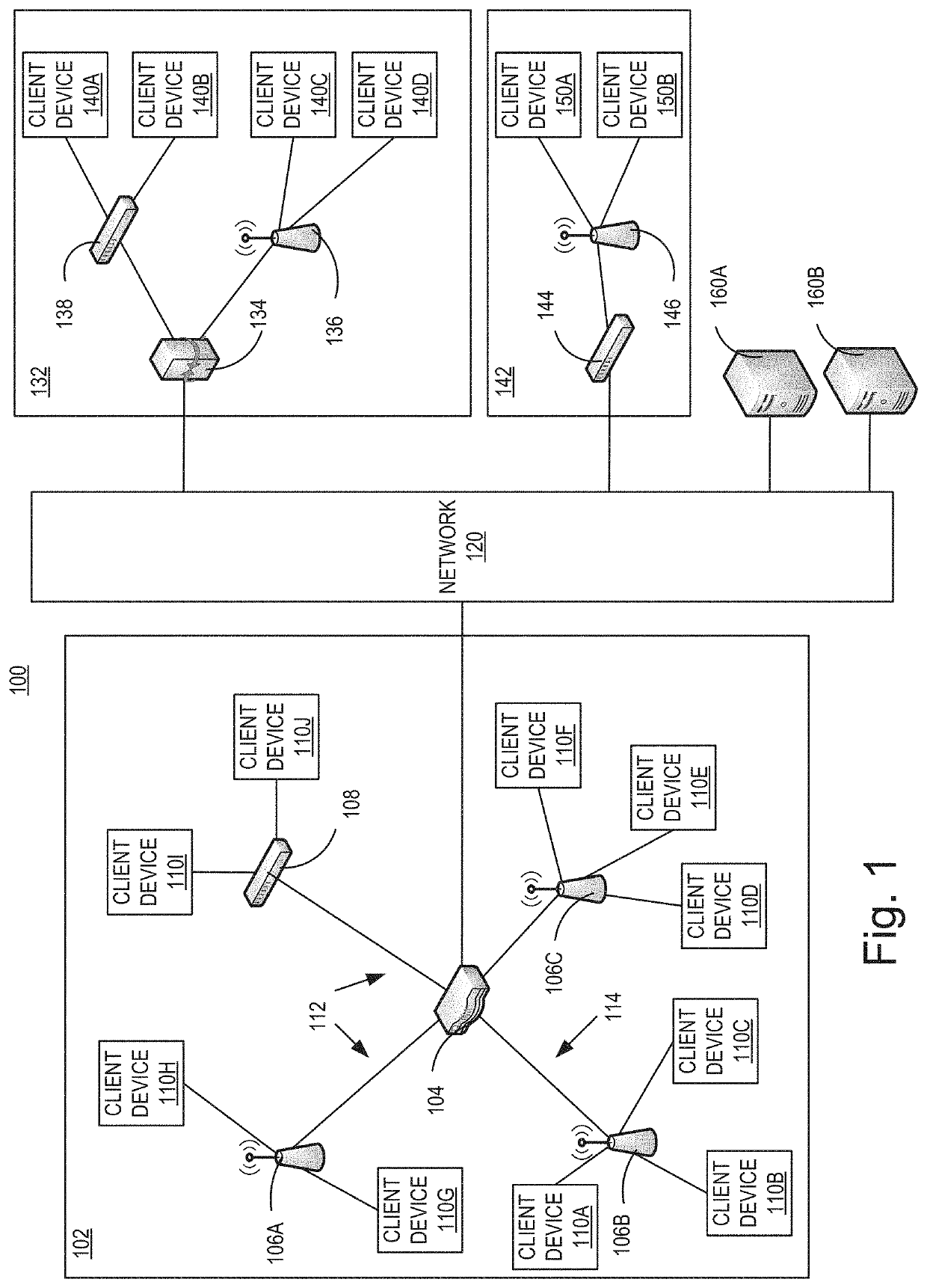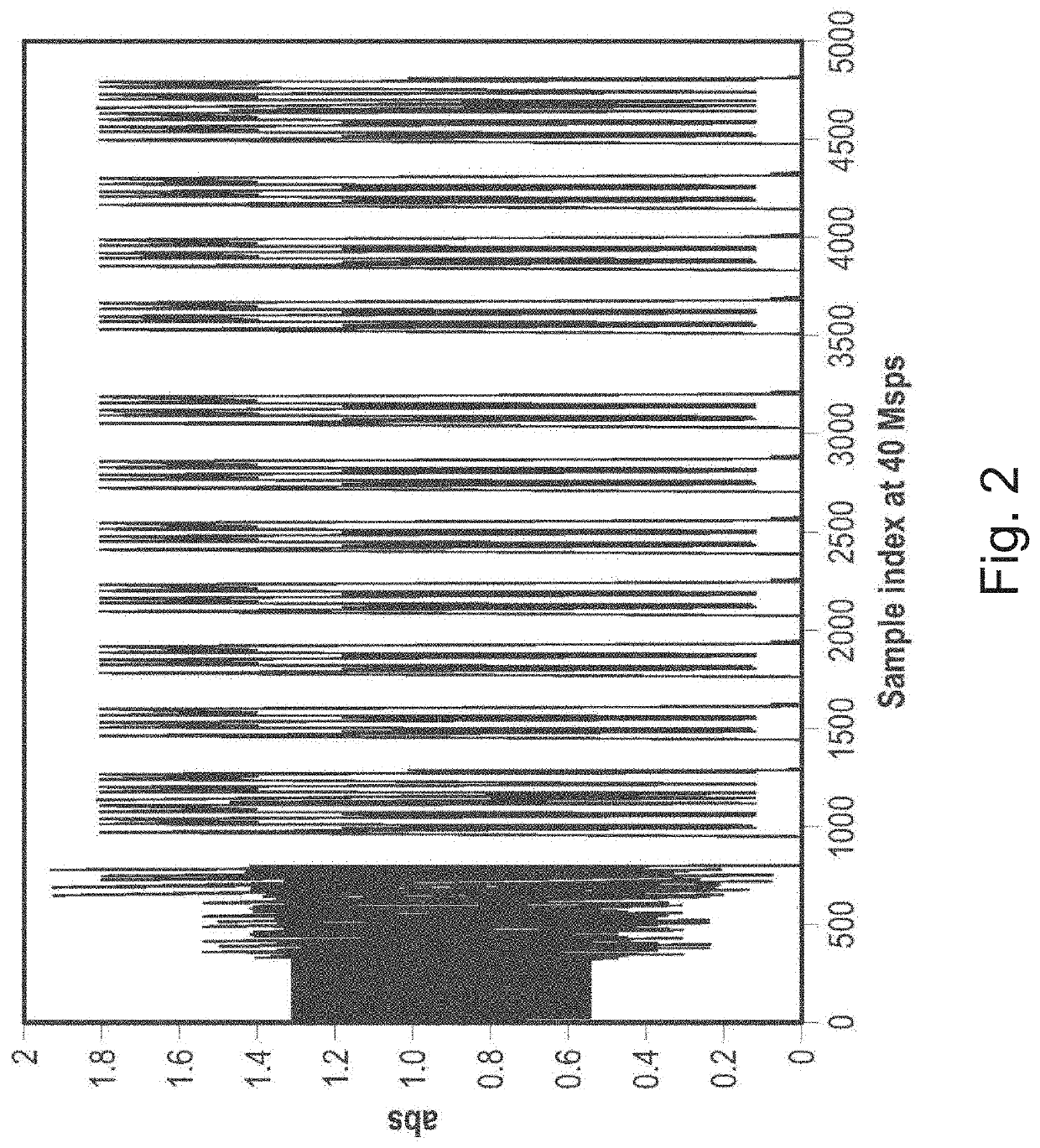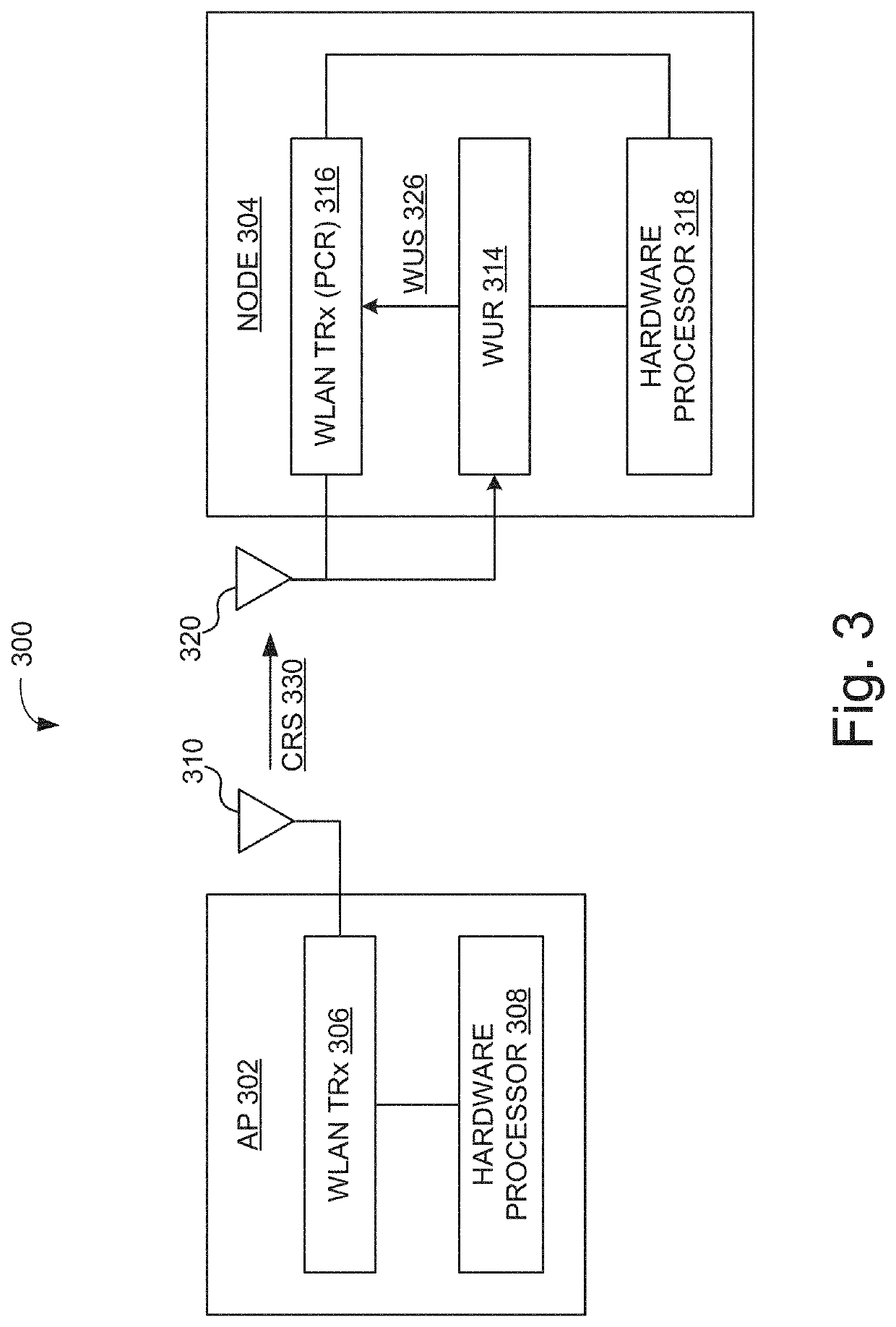Wake up signaling in 802.11 dfs channels
- Summary
- Abstract
- Description
- Claims
- Application Information
AI Technical Summary
Benefits of technology
Problems solved by technology
Method used
Image
Examples
Embodiment Construction
[0014]To reduce WiFi power consumption the new IEEE 802.11ba amendment proposes adding a second low-cost, ultra-low power receive-only radio, referred to as the wake up radio (WUR), alongside the main WiFi radio, referred to as the primary connectivity radio (PCR). The wake up radio is enabled while the primary connectivity radio is disabled. On receiving a wake up radio signal (WURS) from an access point (AP) the wake up radio wakes the primary connectivity radio so that normal IEEE 802.11 communication can take place between the access point and the device. This solution enables ultra-low power WiFi operation with very low latency.
[0015]Unfortunately the WURS specified by the amendment closely resembles a radar signal and so may trigger dynamic frequency selection (DFS) in DFS channels. When this happens WiFi radios are required by law to vacate the affected DFS channel for a significant interval, currently set at 30 minutes. For this reason the IEEE 802.11ba standard does not all...
PUM
 Login to View More
Login to View More Abstract
Description
Claims
Application Information
 Login to View More
Login to View More - R&D
- Intellectual Property
- Life Sciences
- Materials
- Tech Scout
- Unparalleled Data Quality
- Higher Quality Content
- 60% Fewer Hallucinations
Browse by: Latest US Patents, China's latest patents, Technical Efficacy Thesaurus, Application Domain, Technology Topic, Popular Technical Reports.
© 2025 PatSnap. All rights reserved.Legal|Privacy policy|Modern Slavery Act Transparency Statement|Sitemap|About US| Contact US: help@patsnap.com



